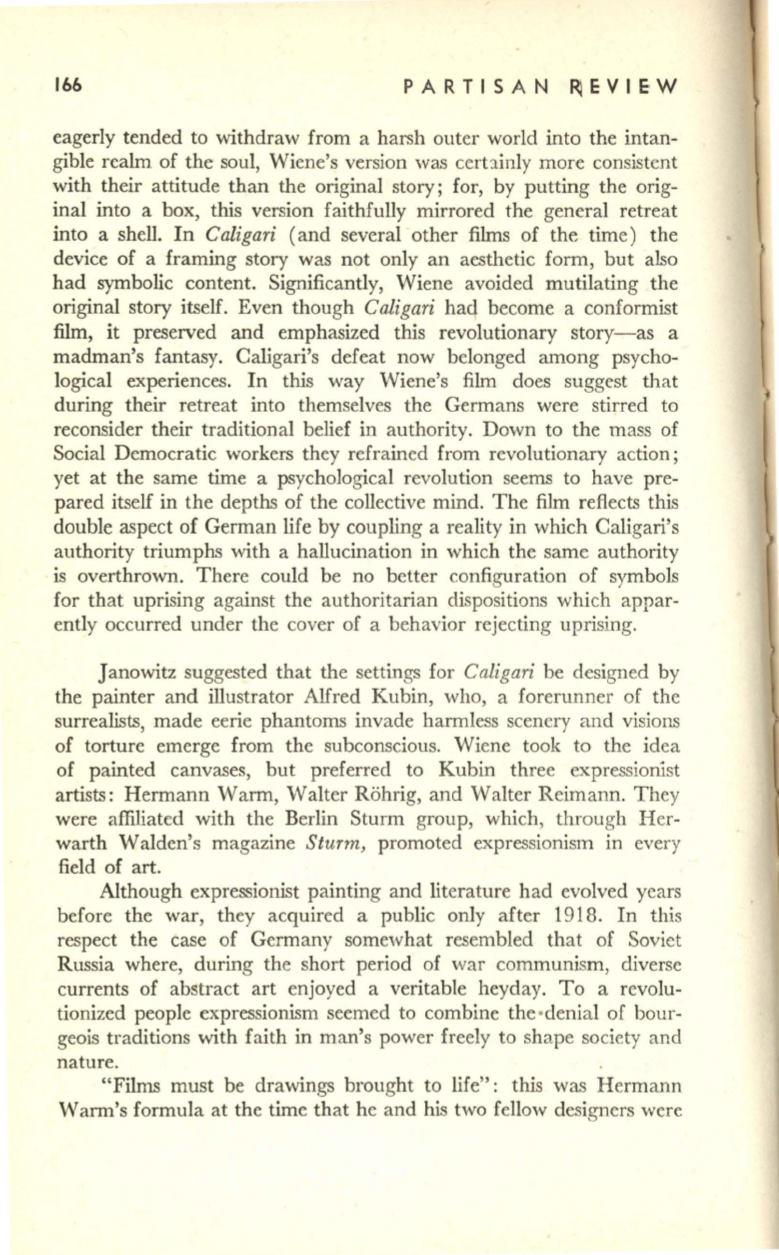
166
PARTISAN R)EVIEW
eagerly tended to withdraw from a harsh outer world into the intan–
gible realm of the soul, Wiene's version was cert:tinly more consistent
with their attitude than the original story; for, by putting the orig–
inal into a box, this version faithfully mirrored the general retreat
into a shell. In
Caligari
(and several other films of the time) the
device of a framing story was not only an aesthetic form, but also
had symbolic content. Significantly, Wiene avoided mutilating the
original story itself. Even though
Caligari
had become a conformist
film, it preserved and emphasized this revolutionary story-as a
madman's fantasy. Caligari's defeat now belonged among psycho–
logical experiences. In this way Wiene's film does suggest that
during their retreat into themselves the Germans were stirred to
1•
reconsider their traditional belief in authority. Down to the mass of
Social Democratic workers they refrained from revolutionary action;
yet at the same time a psychological revolution seems to have pre-
pared itself in the depths of the collective mind. The film reflects this
double aspect of German life by coupling a reality in which Caligari's
authority triumphs with a hallucination in which the same authority
is overthrown. There could be no better configuration of symbols
for that uprising against the authoritarian dispositions which appar-
ently occurred under the cover of a behavior rejecting uprising.
Janowitz suggested that the settings for
Caligari
be designed by
the painter and illustrator Alfred Kubin, who, a forerunner of the
surrealists, made eerie phantoms invade harmless scenery and visions
of torture emerge from the subconscious. Wiene took to the idea
of painted canvases, but preferred to Kubin three expressionist
artists: Hermann Warm, Walter Rohrig, and Walter Reimann. They
were affiliated with the Berlin Sturm group, which, through Her–
warth Walden's magazine
Sturm,
promoted expressionism in every
field of art.
Although expressionist painting and literature had evolved years
before the war, they acquired a public only after 1918. In this
respect the case of Germany somewhat resembled that of Soviet
Russia where, during the short period of war communism, diverse
currents of abstract art enjoyed a veritable heyday. To a revolu–
tionized people expressionism seemed to combine the •denial of bour–
geois traditions with faith in man's power freely to shape society and
nature.
"Films must be drawings brought to life": this was Hermann
Warm's formula at the time that he and
his
two fellow designers were


